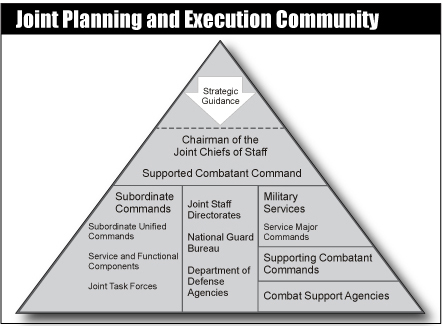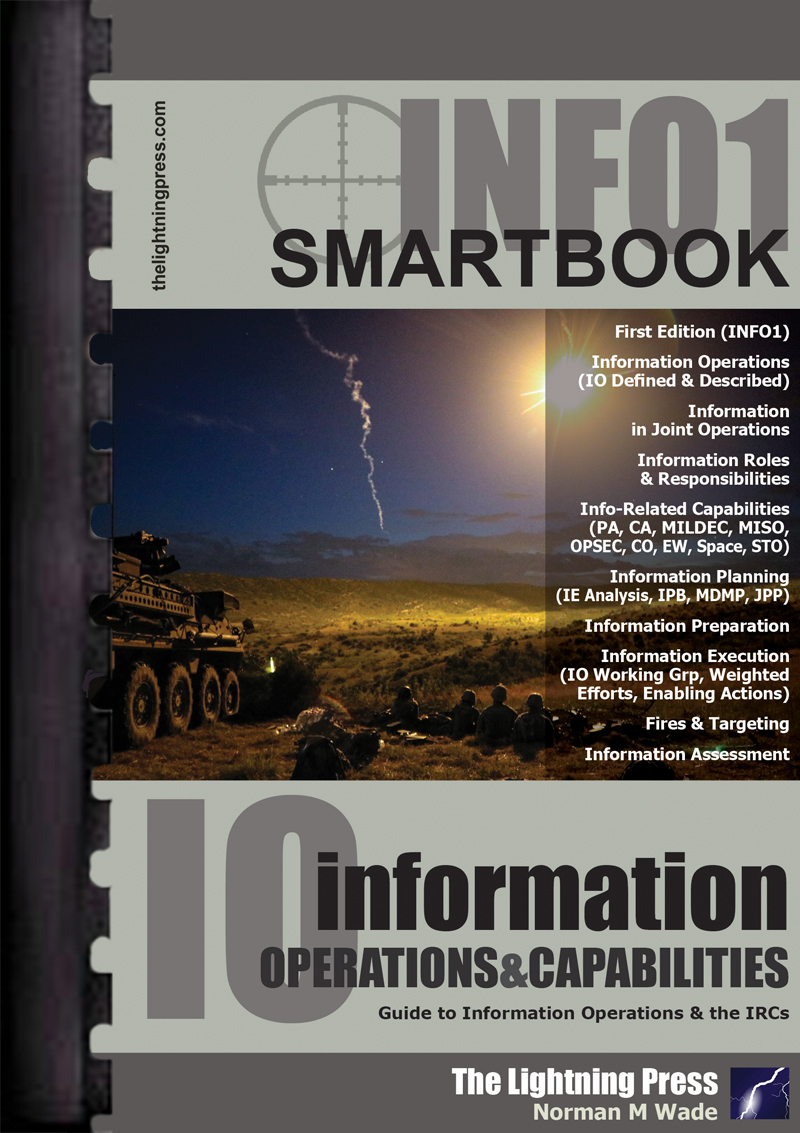Joint operation planning occurs in a networked, collaborative environment, which requires dialogue among senior leaders, concurrent and parallel plan development, and collaboration across multiple planning levels. Clear strategic guidance and frequent interaction between senior leaders and planners promote an early, shared understanding of the complex operational problem presented, strategic and military end states, objectives, mission, planning assumptions, considerations, risks, and other key guidance factors. This facilitates responsive plan development and modification, resulting in constantly up-to-date plans. The focus is on developing plans that contain a variety of viable, flexible options for commanders, and in the case of top priority JSCP tasked plans, for SecDef to consider.
The headquarters, commands, and agencies involved in joint planning or committed to a joint operation are collectively termed the Joint Planning and Execution Community (JPEC). Although not a standing or regularly meeting entity, the JPEC consists of the CJCS and other members of the JCS, JS, the Services and their major commands, the CCMDs and their subordinate commands, and the CSAs.

The headquarters, commands, and agencies involved in joint operation planning or committed to a joint operation are collectively termed the Joint Planning and Execution Community (JPEC). Although not a standing or regularly meeting entity, the JPEC consists of the CJCS and other members of the JCS, JS, the Services and their major commands, the CCMDs and their subordinate commands, and the CSAs.
Supported CCDR
The supported CCDR has primary responsibility for all aspects of a task assigned by the GEF, the JSCP, or other joint operation planning directives. In the context of joint operation planning, the supported commander prepares plans and orders in response to requirements generated by the President or SecDef. Once approved by SecDef or the CJCS, the designated supporting commanders provide planning assistance, forces, or other resources to a supported commander.
Supporting Commander
Supporting commanders provide forces, assistance, or other resources to a supported commander in accordance with the principles set forth in JP 1, Doctrine for the Armed Forces of the United States. Supporting commanders prepare supporting plans as required. A commander may be a supporting commander for one operation while being a supported commander for another.
In the planning process, the President and SecDef issue policy, strategic guidance, and direction. The President, assisted by the NSC, also issues policy and strategic direction to guide the planning efforts of federal agencies that represent other instruments of national power. SecDef, with the advice and assistance of the CJCS, organizes the JPEC for joint operation planning by establishing appropriate command relationships among the CCDRs.
 This article is an extract from "JFODS6: The Joint Forces Operations & Doctrine SMARTbook, 6th Ed. (Guide to Joint Warfighting, Operations & Planning)" by The Lightning Press. Download a free PDF sample and learn more at: JFODS6: The Joint Forces Operations & Doctrine SMARTbook, 6th Ed. (Guide to Joint Warfighting, Operations & Planning).
This article is an extract from "JFODS6: The Joint Forces Operations & Doctrine SMARTbook, 6th Ed. (Guide to Joint Warfighting, Operations & Planning)" by The Lightning Press. Download a free PDF sample and learn more at: JFODS6: The Joint Forces Operations & Doctrine SMARTbook, 6th Ed. (Guide to Joint Warfighting, Operations & Planning).
Browse additional military doctrine articles in our SMARTnews Blog & Resource Center.
About The Lightning Press SMARTbooks. Recognized as a “whole of government” doctrinal reference standard by military, national security and government professionals around the world, SMARTbooks comprise a comprehensive professional library. SMARTbooks can be used as quick reference guides during operations, as study guides at education and professional development courses, and as lesson plans and checklists in support of training. Browse our collection of Military Reference SMARTbooks to learn more.











































